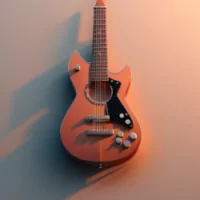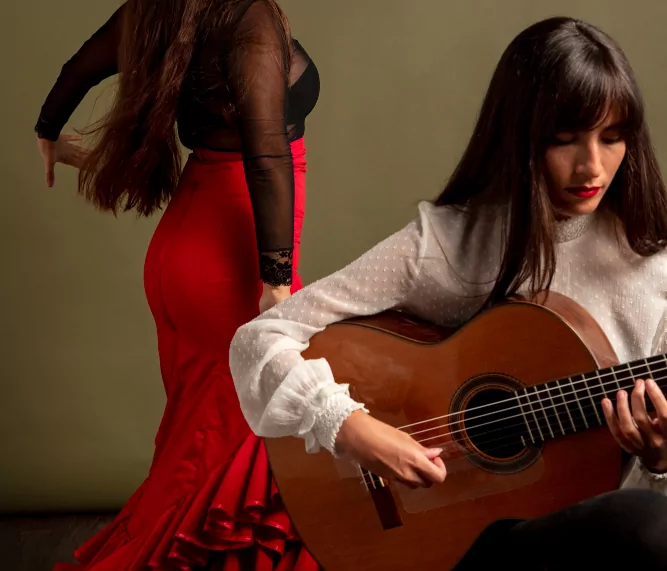The intense and emotional musical style known as flamenco, which originated in the Andalusian region of Spain, combines fascinating guitar playing, precise dancing, and enticing singing. The guitar, which is central to flamenco’s expression of its raw intensity and profound emotions, is at the center of this art form. In this article, we shall explore the lengthy history and varied functions of the guitar in flamenco music.
Flamenco represents a rich cultural legacy and is more than just music. The flamenco heritage is not complete without the guitar, which is used both as a solo instrument and as a supportive accompaniment to the vibrant singing and complex dancing moves that define flamenco performances. The guitar plays a significant part in Andalusia’s history, culture, and emotions.
Learn to play Flamenco
Learn to play Flamenco Guitar online with the most detailed tutorials and methods for adults.
Finally, find the great feeling of making music on your own!
The guitar provides the rhythmic foundation for flamenco, noted for its complex rhythms and syncopated beats. The intricate rhythms that are essential to flamenco’s distinctive sound are created by guitarists using a range of rhythmic techniques, such as rasgueados (strummed notes), golpes (percussive knocks on the guitar body), and tapping on the strings.
Flamenco uses the guitar to create tunes that are both expressive and emotional. These tunes frequently evoke thoughts of love, longing, grief, and joy as they mirror the strong emotions and experiences of the human condition. To give their tunes depth and color, guitarists use techniques like ligados (hammer-ons and pull-offs), tremolo (fast repetition of a single note), and picado (quick alternate picking).
Flamenco guitarists use a variety of advanced techniques, which add to the distinctive character of the music.
Alzapúa: A method that involves plucking the strings downward with the thumb to produce a percussive and rhythmic impact.
Flamenco frequently uses arpeggios to produce subtle and delicate passages that contrast with rhythmic vigor.
Flamenco Tremolo: A musical technique that creates a shimmering effect similar to a tremolo by swiftly switching between three or four notes.
Rasgueado is the traditional Flamenco strumming style in which the fingers are fanned out and brushed across the strings to produce a rhythmic and percussive sound.
Flamenco guitarists have a rare talent for fusing virtuosic solo performances with backing accompaniment. They display their technical mastery in solo performances with complex tunes and varied rhythms. They operate as a driving force that interacts with the voice and footwork of the dancers and singers, performing with more depth and vigor.
The guitar has a more significant function in flamenco music than just that of an instrument; it serves as the conduit for centuries’ worth of history, passion, and emotion. The guitar perfectly encapsulates the soul-stirring artistry of flamenco with its intricate rhythms, emotive melodies, and dazzling techniques. The guitar serves as a tribute to flamenco’s eternal history and its capacity to captivate audiences with its fiery heartbeat as the strings resound with tales of love, suffering, and triumph.
Image by Freepik

